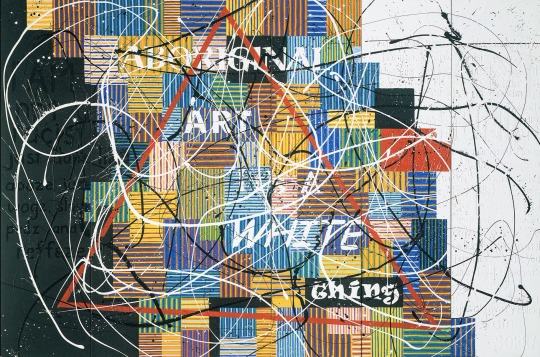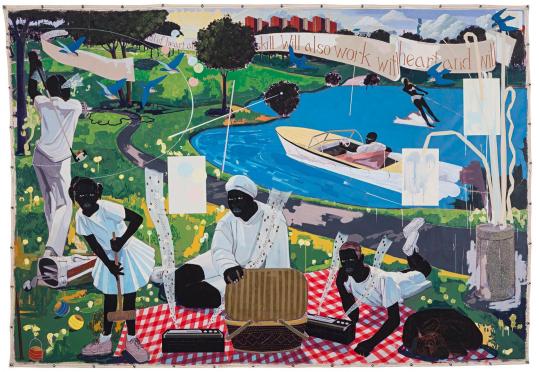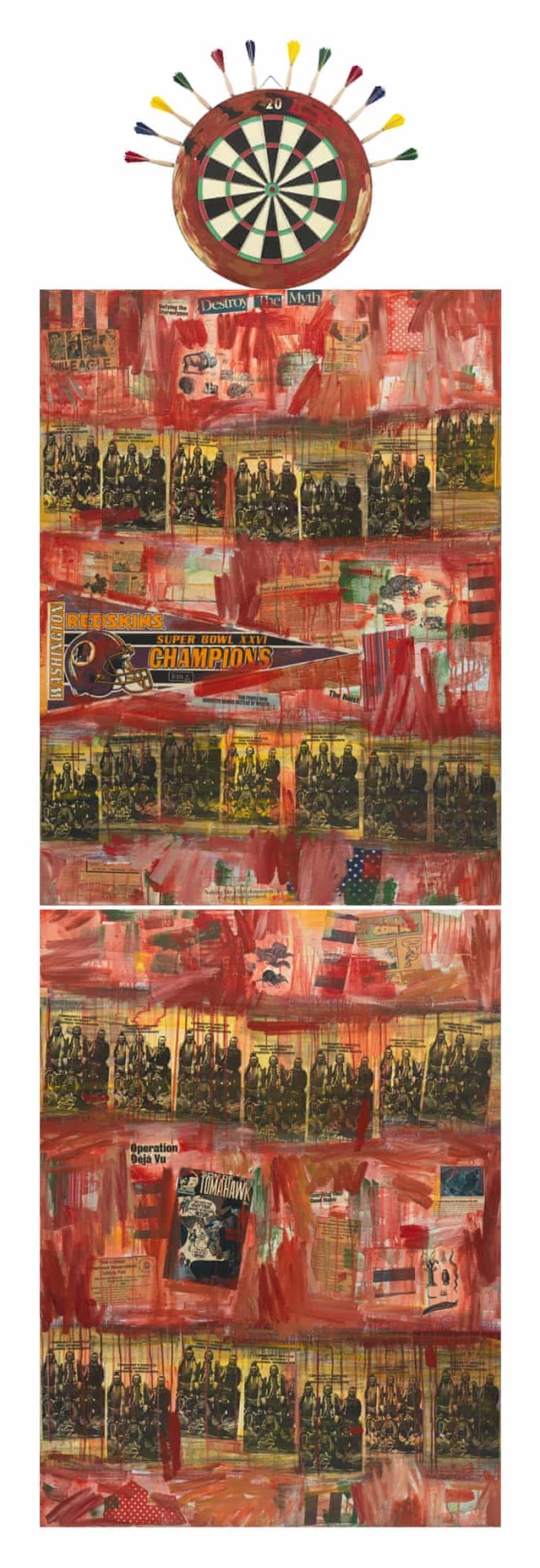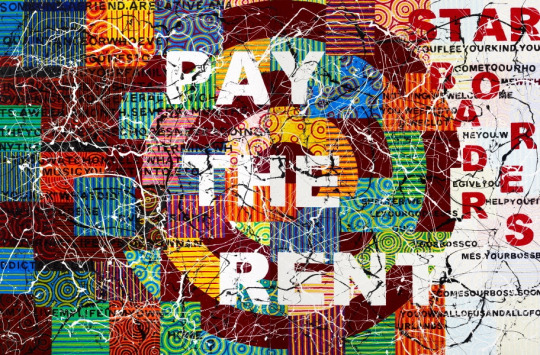Text
Assignment 3
Podcast Link: https://on.soundcloud.com/W8jxLYPZX4CPQDXx5
Critical Overview:
In this podcast, I do an overview of my research, beginning with the conception of my topic, reviewing critical texts with resulting takeaways, and introducing the artists and some accompanying works. I start with a short narrative detailing my first reactions to Aboriginal and Indigenous history. I then pinpoint what made me want to focus on my topic. My topic or theme is explained as, the way activism in art can exemplify similarities and differences between three major social movements(Aboriginal, Native Americans, and Black Americans). I lay the groundwork for art activism and then introduce the artists(Richard Bell, Jaune Quick-To-See Smith, and Kerry James Marshall). I then explain how I wish to use this research to address my topic in my essay. I end with highlighting an Aboriginal event and how this research has shaped my understanding of Aboriginal and Torres Strait Islander perspectives.
The critical texts I refer to about the objective relationship between art and activism are, Boris Gory’s “On Art Activism” and Emily Wilcox’s “An Investigation of the Intersection between Art and Activism”. When discussing the artist and work, I referred to Richard Bell’s “Pay the Rent”(Image 1) and Jaune Quick-To-See Smith’s work “I See Red: Target”(Image 2). I also mention Richard Bell’s work, “Bell’s Theorem” when discussing his artwork and perspective. I used the article “It’s like we don’t exist” written by Nadja Sayej to help understand the meaning of Jaune Quick-To-See Smith’s work and its impact. When connecting my research to an Aboriginal Event, I watched a Youtube video about Charlie Perkins and his activism created by Behind the News.
I refrained from including a few sources from my annotated bibliography, not because I do not plan on using them, but for sake of time and relevance. I only explained one example to highlight the connections I plan on drawing between movements using the artists and their works(I used Richard Bell and Jaune Quick-To-See Smith as an example). I didn’t formally introduce Kerry James Marshall and the work of his that I want to highlight, but I do plan on heavily incorporating him. As I move forward with my essay, the only thing I am concerned about is the topic being too broad. There is a lot to cover if I want to represent all social movements, their connections with each other, and the connection of art to each social movement. I am considering only doing one American social movement, but I will make that decision only if the content seems like too much to cover.
Boris Gory’s “On Art Activism”
Emily Wilcox’s “An Investigation of the Intersection between Art and Activism” https://digitalcommons.wku.edu/cgi/viewcontent.cgi?article=1280&context=stu_hon_theses
Richard Bell’s “Bell’s Theorem”
Nadja Sayej’s “It’s like we don’t exist’
Charlie Perkin’s Youtube Clip
youtube
1 note
·
View note
Text
Assignment 2
Theme: The way activism in art can exemplify similarities and differences between three major social movements.
Focus: As an American study abroad student, my understanding of Aboriginal history, art, and activism is extremely limited. As I learn about the horrors Aboriginal people have experienced, as well as their resilience and power in the face of adversity, I have been finding myself drawing connections between them and major social movements in American history. With a past similar to that of the attempted genocide the Native Americans endured and their social activism mirroring the Black Rights Movement, the Aboriginal experience and agenda sits somewhere between the two. Visual arts have been utilized by all three marginalized groups as a way of reclaiming their stolen history, finding meaning in their pain, and as a way to fight for basic human rights. Exploring the works of three outspoken activists, Richard Bell, Jaune Quick-To-See-Smith, and Kerry James Smith, will illustrate how these social movements and lived experiences compare and contrast, as well as how they interact with each other.
Artist:
Jaune Quick-To-See Smith: A Native American of French-Cree, Salish, and Shoshone ancestry artist whose practices include painting, drawing, printmaking, and collage. She finds a balance between confronting the injustice of her and her ancestors' past and establishing her culture's relationship to everyday American life. Her work is described as defiant and humorous, as she tackles America's problematic past with elements of pop-culture as well as traditional Native American practices. (Active 1970s - present day)
Richard Bell: An Aboriginal artist and activist of the proppaNOW collective and of Kamilaroi, Kooma, Jiman, and Gurang people whose practices include painting, film-making, and installations. He creates pieces that are often done in a pop-art style, designed to challenge preconceived ideas of Aboriginal people and art. His work is often described as provocative, humorous, and thought-provoking. (Active 1980s - present day)
Kerry James Marshall: A black American painter from Birminingham, Alabama who manipulates common stereotypes to challenge the marginalization of black people. His work is often commentary on the black experience and his everyday life. He is an active artist today, but he also produced many of his popular pieces during the late 20th century. (Active 1980s - present day)
0 notes
Text

Richard Bell
‘Scientia E Metaphysica (Bell’s Theorem)’
2003
Vibrant painting on canvas work done in a pop-art style, commenting on how the Aborginal art industry is controlled and regulated by white people who profit off of their works
0 notes
Text

Kerry James Marshall
Past Times
1997
Colorful painting on canvas artwork that challenges the marginalization of black Americans by manipulating stereotypes.
1 note
·
View note
Text

Jaune Quick-To-See Smith
I See Red: Target
1992
A 11ft-talled mixed media artpiece on canvas. This work is a reaction to the colonization of America, with a collage of newspaper photos from the Char-Koosta News, a target looming over top, and red smeared paint. Smith is inspired by works done by Andy Warhol and Jasper Johns.
0 notes
Text
Annotated Bibliography
Behind The News. (2020, November 19). Charlie Perkins - Behind the News. Www.youtube.com. https://www.youtube.com/watch?v=lV4syIhRAdI
This source is a short video titled “Charlie Perkins - Behind the News” produced by Behind the News. It provides a good overview of the activist work Charlie Perkins was involved in during the 1960s. It follows Perkin’s role in establishing the Freedom Riders movement. I think it is an important source for my research because it helps me understand the form of activism that took hold in Austrilia and how it was impacted by the American Civil rights movement.
Bell, R. (2002, November). BELL’S THEOREM. Kooriweb.org. http://www.kooriweb.org/foley/great/art/bell.html
Bell’s Theorm is an essay written by one of the three artists I’m am focusing on, Richard Bell, highlighting his beliefs on the colonization of Austrilia, Aboriginal art, and many other relevant topic revolving Aboriginal culture. He covers a range of topics in a humorous and playful, but still serious way. This source helps me understand Richard Bell’s views on the role of Aborginal art in the activist sphere, as well as his personal form of activism.
Boris Groys. (n.d.). http://worker01.e-flux.com/pdf/article_8984545.pdf
“Art on Activism” is a article by Boris Gorys that explores the phenomenon of art activism. He examines the political function art has on social movements. He also explore the history of art in the activist sphere, being a relatively new concept. This will be a helpful resource to use because it aids my understanding of the subjective connection between art and activism without the impact of a specific movement.
Coxhead, G. (2019, July 13). An interview with Kerry James Marshall. Apollo Magazine. https://www.apollo-magazine.com/kerry-james-marshall-interview/
This interview with Kerry James Marshall conducted by Gabriel Coxhead, covers Marshall’s artworks and beliefs from the 1980s to the current Black Lives Matter movement. Marshall shares his thoughts about America’s forever shifting social rights climate and how he has viewed the role and importance of his art throughout the years. This is a useful source because it covers Marshall’s work during the height of many social movements.
Reilly, M. (2011, September 14). Uz vs Them | MCA Australia. Www.mca.com.au. https://www.mca.com.au/artists-works/works/2008.43/
This catalouge on Richard Bell’s “Uz vs. Them” exhibit, contains an interview between writer, Maura Reilly, and Bell. During this interview, Bell details his upbringing and introduction into art and activism. I find this a useful source when trying to understand the experience of Aboriginal artists. Bell also talks about the connection the Aboriginal movement had to America, connecting the different movements.
Sayej, N. (2020, July 29). “It’s like we don’t exist”: Jaune Quick-to-See Smith on Native American artists. The Guardian. https://www.theguardian.com/artanddesign/2020/jul/29/jaune-quick-to-see-smith-native-american-art
In this Guardian Interview, Jaune Quick-To-See Smith, one of my focused artists, talks about how one of her art pieces is being the first ever Native American artwork to be put on display in the National Gallery of Art in Washington D.C. She describes her specific work and what it means to be displayed in a major gallery. She also speaks about how it reflects on Native American treatmet, that it took so long for their artwork to be represented. This is a useful source because it gives a good idea of who Jaune Quick-To-See Smith is and what she believes in, and how Native American artists are continually overlooked in the art sphere.
Talking Museums, Tricksters, and the Disappeared with Iconic Artist Jaune Quick-to-See Smith. (2020, August 8). Rose Fredrick. https://rosefredrick.com/talking-museums-tricksters-and-the-disappeared-with-iconic-artist-jaune-quick-to-see-smith/
This interview between Jaune Quick-To-See Smith and Rose Fredrick covers many of Smith’s belief on the role of young Native American artist as activist and what their role could mean for Native American policies and rights. I think this is a helpful source because it reveals Smith’s personal beliefs about what her and other artist work could do for their movement.
Wilcox, E. (2009). TopSCHOLAR® An Investigation of the Intersection between Art and Activism. https://digitalcommons.wku.edu/cgi/viewcontent.cgi?article=1280&context=stu_hon_theses
This essay written by Emily Wilcox, explores the connection between artist, art, and activism. Wilcox investigates the role of art in current social and enviromental crises and how artist view themselves as the agents of change. This essay will be a helpful source by providing an analysis on the perspective artist have when producing socially charged work.
1 note
·
View note

